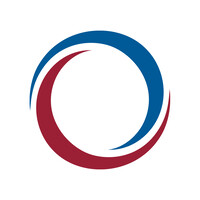
Covenant Health Company Cyber Security Posture
covenanthealth.comCovenant Health is a not-for-profit, locally owned integrated healthcare enterprise with a mission to improve the quality of life in our communities through better health. Covenant Health serves a 25-county region of Tennessee and has more than 2 million patient encounters annually. Our 11,000+ employees, physicians and volunteers serve patients at our acute-care and behavioral health hospitals, outpatient facilities, homecare services, and more than 80 affiliated medical practices. We are nationally recognized for our enduring legacy of excellence, and have received multiple designations as a "best employer" from Forbes, Becker's Healthcare and Newsweek. The hospitals of Covenant Health: • Claiborne Medical Center • Cumberland Medical Center • Fort Loudoun Medical Center • Fort Sanders Regional Medical Center • LeConte Medical Center • Methodist Medical Center • Morristown-Hamblen Healthcare System • Parkwest Medical Center • Peninsula Behavioral Health (a division of Parkwest) • Roane Medical Center If you are interested in working at Covenant Health: • Physicians: www.CovenantNewMD.com • All other clinical and non-clinical opportunities: www.CovenantCareers.com
Covenant Health Company Details
covenant-health
4657 employees
23730.0
62
Hospitals and Health Care
covenanthealth.com
46
COV_3629909
In-progress
Between 800 and 900
This score is AI-generated and less favored by cyber insurers, who prefer the TPRM score.
 Covenant Health Global Score
Covenant Health Global Score.png)

Covenant Health Company Scoring based on AI Models
| Model Name | Date | Description | Current Score Difference | Score |
|---|---|---|---|---|
| AVERAGE-Industry | 03-12-2025 | This score represents the average cybersecurity rating of companies already scanned within the same industry. It provides a benchmark to compare an individual company's security posture against its industry peers. | N/A | Between 800 and 900 |
Covenant Health Company Cyber Security News & History
| Entity | Type | Severity | Impact | Seen | Url ID | Details | View |
|---|---|---|---|---|---|---|---|
| Covenant Health | Cyber Attack | 100 | 5/2025 | COV416053125 | Link | ||
Rankiteo Explanation : Attack threatening the organization’s existenceDescription: Covenant Health, a Catholic healthcare organization, suffered a cyberattack that forced three of its hospitals to shut off all access to data systems. The incident impacted St. Joseph Hospital and St. Mary’s Health System in Maine, and St. Joseph Hospital in New Hampshire. The attack caused technology outages, affecting phones and internet access, and leading to longer wait times and limited lab services. Despite the disruptions, healthcare services continued with some adjustments. No cybercriminal group has claimed responsibility for the attack. | |||||||
Covenant Health Company Subsidiaries

Covenant Health is a not-for-profit, locally owned integrated healthcare enterprise with a mission to improve the quality of life in our communities through better health. Covenant Health serves a 25-county region of Tennessee and has more than 2 million patient encounters annually. Our 11,000+ employees, physicians and volunteers serve patients at our acute-care and behavioral health hospitals, outpatient facilities, homecare services, and more than 80 affiliated medical practices. We are nationally recognized for our enduring legacy of excellence, and have received multiple designations as a "best employer" from Forbes, Becker's Healthcare and Newsweek. The hospitals of Covenant Health: • Claiborne Medical Center • Cumberland Medical Center • Fort Loudoun Medical Center • Fort Sanders Regional Medical Center • LeConte Medical Center • Methodist Medical Center • Morristown-Hamblen Healthcare System • Parkwest Medical Center • Peninsula Behavioral Health (a division of Parkwest) • Roane Medical Center If you are interested in working at Covenant Health: • Physicians: www.CovenantNewMD.com • All other clinical and non-clinical opportunities: www.CovenantCareers.com
Access Data Using Our API

Get company history
.png)
Covenant Health Cyber Security News
Cyber incident recovery ongoing at Covenant Health, Nashua's St. Joseph Hospital
Health · Cyber incident recovery ongoing at Covenant Health, Nashua's St. Joseph Hospital.
Covenant Health Cyberattack Affecting New England Hospitals
The decision was taken to shut down data systems across the entire network, including at its hospitals, clinics, and provider practices.
Covenant Health attack impacts Maine, New Hampshire hospitals
Investigation into the incident, which did not significantly affect post-acute care facilities, is already underway, noted Covenant Health.
'Cyber incident' disrupts Maine Covenant Health locations
MAINE, USA — A cyber incident affecting several hospitals in Maine is now under investigation. Covenant Health shared with NEWS CENTER Maine ...
Covenant Health cyberattack disrupts New England hospitals
A Covenant Health cyberattack is causing connectivity issues for hospitals in New England as the health system works to restore services. Share ...
News - Cybersecurity incident disrupts operations at multiple Covenant Health facilities
Several hospitals operated by Covenant Health have disclosed experiencing a data security incident that significantly impacted their daily ...
Hospitals in Maine, New Hampshire limit services after cyberattack on Catholic health org
Three hospitals run by Catholic healthcare organization Covenant Health are dealing with a cyberattack that forced the facilities to shut ...
St. Joseph Hospital owner says company targeted in cybersecurity incident
A cybersecurity incident that affected St. Joseph Hospital in Nashua stretched across its parent company's entire organization.
Covenant Health Dealing With Cyberattack Affecting Hospitals
Covenant Health, a Catholic healthcare organization serving New England and parts of Pennsylvania, is dealing with a cyber incident that has ...

Covenant Health Similar Companies

ELSAN
ELSAN, groupe leader de l’hospitalisation privée en France, compte aujourd’hui plus de 28 000 collaborateurs et 7500 médecins libéraux qui exercent dans les 212 établissements et centres du groupe. Ils prennent en charge plus de 4,8 millions de patients par an. Notre mission : offrir à chac

Dr. Sulaiman Al Habib Medical Group
Leading Private Healthcare Provider in the Middle East With a vision to be the most trusted healthcare provider in medical excellence and patient experience globally, Dr. Sulaiman Al-Habib Medical Group (HMG) has become the largest provider of comprehensive healthcare services in the Middle East. A
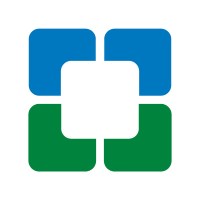
Cleveland Clinic
Cleveland Clinic, located in Cleveland, Ohio, is a not-for-profit, multispecialty academic medical center that integrates clinical and hospital care with research and education. Founded in 1921 by four renowned physicians with a vision of providing outstanding patient care based upon the principl
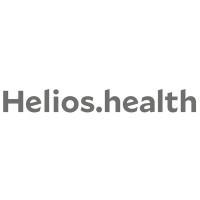
Helios Health GmbH
Based on our extensive expertise and know how we seek to ensure high quality, efficient and patient focused healthcare, locally as well as within an international environment. For this purpose Helios Health was founded in 2017. Helios Health combines Helios Germany (Helios Kliniken) and Helios Spa
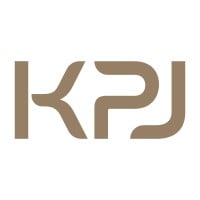
KPJ Healthcare Bhd
Since its inception in 1981 as the first private specialist hospital in Johor, KPJ Healthcare has served communities and neighbourhoods nationwide for over 40 years. Our fundamental purpose since day 1 is the delivery of exceptional diagnosis, health treatment and care for all our patients. KPJ He
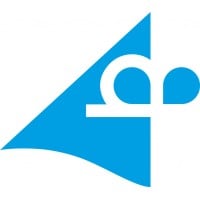
Evangelische Heimstiftung GmbH
Stell dir vor, gemeinsam gestalten wir gute Pflege. Diakonisch – Innovativ – Professionell. Wir sind die Evangelische Heimstiftung – das größte diakonische Pflegeunternehmen in THE LÄND. Gemeinsam mit 10.200 Mitarbeitenden und 810 Auszubildenden betreuen wir 14.760 Menschen in 172 Einrichtu

Frequently Asked Questions (FAQ) on Cybersecurity Incidents
Covenant Health CyberSecurity History Information
Total Incidents: According to Rankiteo, Covenant Health has faced 1 incidents in the past.
Incident Types: The types of cybersecurity incidents that have occurred include ['Cyber Attack'].
Total Financial Loss: The total financial loss from these incidents is estimated to be {total_financial_loss}.
Cybersecurity Posture: The company's overall cybersecurity posture is described as Covenant Health is a not-for-profit, locally owned integrated healthcare enterprise with a mission to improve the quality of life in our communities through better health. Covenant Health serves a 25-county region of Tennessee and has more than 2 million patient encounters annually. Our 11,000+ employees, physicians and volunteers serve patients at our acute-care and behavioral health hospitals, outpatient facilities, homecare services, and more than 80 affiliated medical practices. We are nationally recognized for our enduring legacy of excellence, and have received multiple designations as a "best employer" from Forbes, Becker's Healthcare and Newsweek. The hospitals of Covenant Health: • Claiborne Medical Center • Cumberland Medical Center • Fort Loudoun Medical Center • Fort Sanders Regional Medical Center • LeConte Medical Center • Methodist Medical Center • Morristown-Hamblen Healthcare System • Parkwest Medical Center • Peninsula Behavioral Health (a division of Parkwest) • Roane Medical Center If you are interested in working at Covenant Health: • Physicians: www.CovenantNewMD.com • All other clinical and non-clinical opportunities: www.CovenantCareers.com.
Detection and Response: The company detects and responds to cybersecurity incidents through {description_of_detection_and_response_process}.
Incident Details
Incident 1: Ransomware Attack
Title: {Incident_Title}
Description: {Brief_description_of_the_incident}
Date Detected: {Detection_Date}
Date Publicly Disclosed: {Disclosure_Date}
Date Resolved: {Resolution_Date}
Type: {Type_of_Attack}
Attack Vector: {Attack_Vector}
Vulnerability Exploited: {Vulnerability}
Threat Actor: {Threat_Actor}
Motivation: {Motivation}
Incident 2: Data Breach
Title: {Incident_Title}
Description: {Brief_description_of_the_incident}
Date Detected: {Detection_Date}
Date Publicly Disclosed: {Disclosure_Date}
Date Resolved: {Resolution_Date}
Type: {Type_of_Attack}
Attack Vector: {Attack_Vector}
Vulnerability Exploited: {Vulnerability}
Threat Actor: {Threat_Actor}
Motivation: {Motivation}
Common Attack Types: As of now, the company has not encountered any reported incidents involving common cyberattacks.
Identification of Attack Vectors: The company identifies the attack vectors used in incidents through {description_of_identification_process}.
Impact of the Incidents
Incident 1: Ransomware Attack
Financial Loss: {Financial_Loss}
Data Compromised: {Data_Compromised}
Systems Affected: {Systems_Affected}
Downtime: {Downtime}
Operational Impact: {Operational_Impact}
Conversion Rate Impact: {Conversion_Rate_Impact}
Revenue Loss: {Revenue_Loss}
Customer Complaints: {Customer_Complaints}
Brand Reputation Impact: {Brand_Reputation_Impact}
Legal Liabilities: {Legal_Liabilities}
Identity Theft Risk: {Identity_Theft_Risk}
Payment Information Risk: {Payment_Information_Risk}
Incident 2: Data Breach
Financial Loss: {Financial_Loss}
Data Compromised: {Data_Compromised}
Systems Affected: {Systems_Affected}
Downtime: {Downtime}
Operational Impact: {Operational_Impact}
Conversion Rate Impact: {Conversion_Rate_Impact}
Revenue Loss: {Revenue_Loss}
Customer Complaints: {Customer_Complaints}
Brand Reputation Impact: {Brand_Reputation_Impact}
Legal Liabilities: {Legal_Liabilities}
Identity Theft Risk: {Identity_Theft_Risk}
Payment Information Risk: {Payment_Information_Risk}
Average Financial Loss: The average financial loss per incident is {average_financial_loss}.
Commonly Compromised Data Types: The types of data most commonly compromised in incidents are {list_of_commonly_compromised_data_types}.
Incident 1: Ransomware Attack
Entity Name: {Entity_Name}
Entity Type: {Entity_Type}
Industry: {Industry}
Location: {Location}
Size: {Size}
Customers Affected: {Customers_Affected}
Incident 2: Data Breach
Entity Name: {Entity_Name}
Entity Type: {Entity_Type}
Industry: {Industry}
Location: {Location}
Size: {Size}
Customers Affected: {Customers_Affected}
Response to the Incidents
Incident 1: Ransomware Attack
Incident Response Plan Activated: {Yes/No}
Third Party Assistance: {Yes/No}
Law Enforcement Notified: {Yes/No}
Containment Measures: {Containment_Measures}
Remediation Measures: {Remediation_Measures}
Recovery Measures: {Recovery_Measures}
Communication Strategy: {Communication_Strategy}
Adaptive Behavioral WAF: {Adaptive_Behavioral_WAF}
On-Demand Scrubbing Services: {On_Demand_Scrubbing_Services}
Network Segmentation: {Network_Segmentation}
Enhanced Monitoring: {Enhanced_Monitoring}
Incident 2: Data Breach
Incident Response Plan Activated: {Yes/No}
Third Party Assistance: {Yes/No}
Law Enforcement Notified: {Yes/No}
Containment Measures: {Containment_Measures}
Remediation Measures: {Remediation_Measures}
Recovery Measures: {Recovery_Measures}
Communication Strategy: {Communication_Strategy}
Adaptive Behavioral WAF: {Adaptive_Behavioral_WAF}
On-Demand Scrubbing Services: {On_Demand_Scrubbing_Services}
Network Segmentation: {Network_Segmentation}
Enhanced Monitoring: {Enhanced_Monitoring}
Incident Response Plan: The company's incident response plan is described as {description_of_incident_response_plan}.
Third-Party Assistance: The company involves third-party assistance in incident response through {description_of_third_party_involvement}.
Data Breach Information
Incident 2: Data Breach
Type of Data Compromised: {Type_of_Data}
Number of Records Exposed: {Number_of_Records}
Sensitivity of Data: {Sensitivity_of_Data}
Data Exfiltration: {Yes/No}
Data Encryption: {Yes/No}
File Types Exposed: {File_Types}
Personally Identifiable Information: {Yes/No}
Prevention of Data Exfiltration: The company takes the following measures to prevent data exfiltration: {description_of_prevention_measures}.
Handling of PII Incidents: The company handles incidents involving personally identifiable information (PII) through {description_of_handling_process}.
Ransomware Information
Incident 1: Ransomware Attack
Ransom Demanded: {Ransom_Amount}
Ransom Paid: {Ransom_Paid}
Ransomware Strain: {Ransomware_Strain}
Data Encryption: {Yes/No}
Data Exfiltration: {Yes/No}
Ransom Payment Policy: The company's policy on paying ransoms in ransomware incidents is described as {description_of_ransom_payment_policy}.
Data Recovery from Ransomware: The company recovers data encrypted by ransomware through {description_of_data_recovery_process}.
Regulatory Compliance
Incident 1: Ransomware Attack
Regulations Violated: {Regulations_Violated}
Fines Imposed: {Fines_Imposed}
Legal Actions: {Legal_Actions}
Regulatory Notifications: {Regulatory_Notifications}
Incident 2: Data Breach
Regulations Violated: {Regulations_Violated}
Fines Imposed: {Fines_Imposed}
Legal Actions: {Legal_Actions}
Regulatory Notifications: {Regulatory_Notifications}
Regulatory Frameworks: The company complies with the following regulatory frameworks regarding cybersecurity: {list_of_regulatory_frameworks}.
Ensuring Regulatory Compliance: The company ensures compliance with regulatory requirements through {description_of_compliance_measures}.
Lessons Learned and Recommendations
Incident 1: Ransomware Attack
Lessons Learned: {Lessons_Learned}
Incident 2: Data Breach
Lessons Learned: {Lessons_Learned}
Incident 1: Ransomware Attack
Recommendations: {Recommendations}
Incident 2: Data Breach
Recommendations: {Recommendations}
Key Lessons Learned: The key lessons learned from past incidents are {list_of_key_lessons_learned}.
Implemented Recommendations: The company has implemented the following recommendations to improve cybersecurity: {list_of_implemented_recommendations}.
References
Additional Resources: Stakeholders can find additional resources on cybersecurity best practices at {list_of_additional_resources}.
Investigation Status
Incident 1: Ransomware Attack
Investigation Status: {Investigation_Status}
Incident 2: Data Breach
Investigation Status: {Investigation_Status}
Communication of Investigation Status: The company communicates the status of incident investigations to stakeholders through {description_of_communication_process}.
Stakeholder and Customer Advisories
Incident 1: Ransomware Attack
Stakeholder Advisories: {Stakeholder_Advisories}
Customer Advisories: {Customer_Advisories}
Incident 2: Data Breach
Stakeholder Advisories: {Stakeholder_Advisories}
Customer Advisories: {Customer_Advisories}
Advisories Provided: The company provides the following advisories to stakeholders and customers following an incident: {description_of_advisories_provided}.
Initial Access Broker
Incident 1: Ransomware Attack
Entry Point: {Entry_Point}
Reconnaissance Period: {Reconnaissance_Period}
Backdoors Established: {Backdoors_Established}
High Value Targets: {High_Value_Targets}
Data Sold on Dark Web: {Yes/No}
Incident 2: Data Breach
Entry Point: {Entry_Point}
Reconnaissance Period: {Reconnaissance_Period}
Backdoors Established: {Backdoors_Established}
High Value Targets: {High_Value_Targets}
Data Sold on Dark Web: {Yes/No}
Monitoring and Mitigation of Initial Access Brokers: The company monitors and mitigates the activities of initial access brokers through {description_of_monitoring_and_mitigation_measures}.
Post-Incident Analysis
Incident 1: Ransomware Attack
Root Causes: {Root_Causes}
Corrective Actions: {Corrective_Actions}
Incident 2: Data Breach
Root Causes: {Root_Causes}
Corrective Actions: {Corrective_Actions}
Post-Incident Analysis Process: The company's process for conducting post-incident analysis is described as {description_of_post_incident_analysis_process}.
Corrective Actions Taken: The company has taken the following corrective actions based on post-incident analysis: {list_of_corrective_actions_taken}.
Additional Questions
General Information
Ransom Payment History: The company has {paid/not_paid} ransoms in the past.
Last Ransom Demanded: The amount of the last ransom demanded was {last_ransom_amount}.
Last Attacking Group: The attacking group in the last incident was {last_attacking_group}.
Incident Details
Most Recent Incident Detected: The most recent incident detected was on {most_recent_incident_detected_date}.
Most Recent Incident Publicly Disclosed: The most recent incident publicly disclosed was on {most_recent_incident_publicly_disclosed_date}.
Most Recent Incident Resolved: The most recent incident resolved was on {most_recent_incident_resolved_date}.
Impact of the Incidents
Highest Financial Loss: The highest financial loss from an incident was {highest_financial_loss}.
Most Significant Data Compromised: The most significant data compromised in an incident was {most_significant_data_compromised}.
Most Significant System Affected: The most significant system affected in an incident was {most_significant_system_affected}.
Response to the Incidents
Third-Party Assistance in Most Recent Incident: The third-party assistance involved in the most recent incident was {third_party_assistance_in_most_recent_incident}.
Containment Measures in Most Recent Incident: The containment measures taken in the most recent incident were {containment_measures_in_most_recent_incident}.
Data Breach Information
Most Sensitive Data Compromised: The most sensitive data compromised in a breach was {most_sensitive_data_compromised}.
Number of Records Exposed: The number of records exposed in the most significant breach was {number_of_records_exposed}.
Ransomware Information
Highest Ransom Demanded: The highest ransom demanded in a ransomware incident was {highest_ransom_demanded}.
Highest Ransom Paid: The highest ransom paid in a ransomware incident was {highest_ransom_paid}.
Regulatory Compliance
Highest Fine Imposed: The highest fine imposed for a regulatory violation was {highest_fine_imposed}.
Most Significant Legal Action: The most significant legal action taken for a regulatory violation was {most_significant_legal_action}.
Lessons Learned and Recommendations
Most Significant Lesson Learned: The most significant lesson learned from past incidents was {most_significant_lesson_learned}.
Most Significant Recommendation Implemented: The most significant recommendation implemented to improve cybersecurity was {most_significant_recommendation_implemented}.
References
Most Recent Source: The most recent source of information about an incident is {most_recent_source}.
Most Recent URL for Additional Resources: The most recent URL for additional resources on cybersecurity best practices is {most_recent_url}.
Investigation Status
Current Status of Most Recent Investigation: The current status of the most recent investigation is {current_status_of_most_recent_investigation}.
Stakeholder and Customer Advisories
Most Recent Stakeholder Advisory: The most recent stakeholder advisory issued was {most_recent_stakeholder_advisory}.
Most Recent Customer Advisory: The most recent customer advisory issued was {most_recent_customer_advisory}.
Initial Access Broker
Most Recent Entry Point: The most recent entry point used by an initial access broker was {most_recent_entry_point}.
Most Recent Reconnaissance Period: The most recent reconnaissance period for an incident was {most_recent_reconnaissance_period}.
Post-Incident Analysis
Most Significant Root Cause: The most significant root cause identified in post-incident analysis was {most_significant_root_cause}.
Most Significant Corrective Action: The most significant corrective action taken based on post-incident analysis was {most_significant_corrective_action}.
What Do We Measure?
















Every week, Rankiteo analyzes billions of signals to give organizations a sharper, faster view of emerging risks. With deeper, more actionable intelligence at their fingertips, security teams can outpace threat actors, respond instantly to Zero-Day attacks, and dramatically shrink their risk exposure window.
These are some of the factors we use to calculate the overall score:
Identify exposed access points, detect misconfigured SSL certificates, and uncover vulnerabilities across the network infrastructure.
Gain visibility into the software components used within an organization to detect vulnerabilities, manage risk, and ensure supply chain security.
Monitor and manage all IT assets and their configurations to ensure accurate, real-time visibility across the company's technology environment.
Leverage real-time insights on active threats, malware campaigns, and emerging vulnerabilities to proactively defend against evolving cyberattacks.




